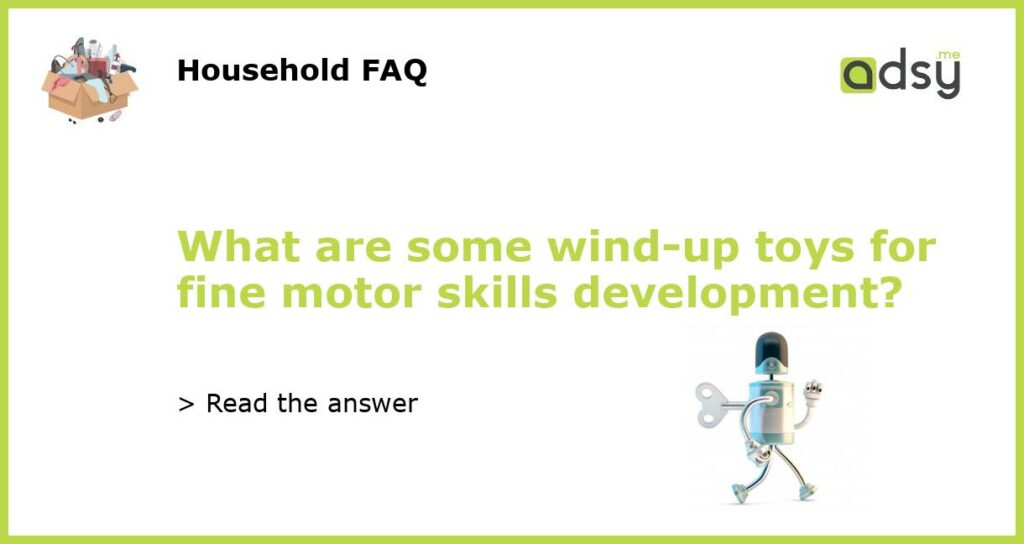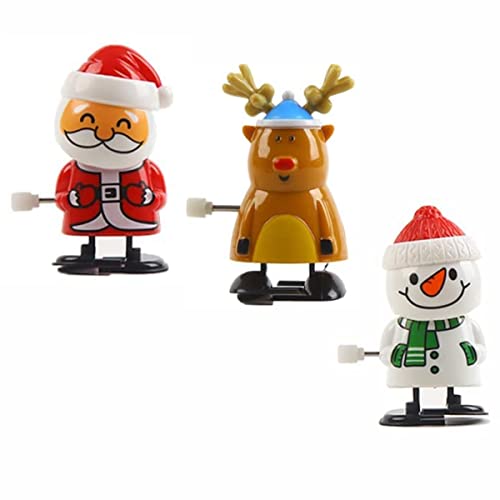The Importance of Fine Motor Skills Development
Fine motor skills are essential for everyday tasks such as writing, using a fork, or tying shoelaces. They involve the coordination of small muscles in the hands and fingers, which are crucial for precise movements. Developing these skills can be particularly challenging for young children, but there are various toys and activities that can help.
Wind-Up Toys as Tools for Fine Motor Skills Development
Wind-up toys are an excellent tool for promoting the development of fine motor skills in children. These toys require the use of small muscles in the fingers and hands to wind up the mechanism and make the toy move. This repetitive motion helps strengthen those muscles and improves hand-eye coordination.
Examples of Wind-Up Toys for Fine Motor Skills Development
There are several wind-up toys available that can effectively help children develop their fine motor skills:
a) Wind-Up Cars: Wind-up cars are a classic option that requires children to wind up the car’s mechanism before it can move. This activity helps improve finger dexterity and hand strength.
b) Wind-Up Animals: Wind-up animals, such as monkeys or dogs, are also great for fine motor skills development. Children need to wind up the toy by turning a key or twisting a knob, engaging their fingers and hand muscles.
c) Wind-Up Robots: Wind-up robots are not only entertaining but also beneficial for fine motor skills development. Children can wind up the robot and watch it move, improving hand-eye coordination and finger strength in the process.
d) Wind-Up Musical Toys: Wind-up musical toys, like music boxes or wind-up pianos, can provide a multisensory experience while enhancing fine motor skills. Children can wind up the toy and then use their fingers to press the keys or operate other interactive elements.
Tips for Choosing Wind-Up Toys for Fine Motor Skills Development
When selecting wind-up toys to promote fine motor skills development, consider the following tips:
a) Size and Ease of Use: Choose toys that are the appropriate size for your child’s hands and easy enough for them to wind up independently. Avoid toys with small parts that could present a choking hazard.
b) Variety: Provide a range of wind-up toys to keep your child engaged and interested. Offer different shapes, sizes, and functionalities to promote a diverse set of fine motor skills.
c) Safety: Ensure that the wind-up toys you choose have gone through proper safety testing and adhere to safety guidelines. Check for any sharp edges, loose parts, or potential hazards.
d) Durability: Opt for wind-up toys made of sturdy materials that can withstand repeated use. This way, your child can enjoy the toys for an extended period as they continue to develop their fine motor skills.
Incorporating Wind-Up Toys into Playtime
To maximize the benefits of wind-up toys for fine motor skills development, consider incorporating them into various playtime activities:
a) Races: Set up a race track or obstacle course and have your child wind up their wind-up cars or animals to see which one moves the fastest or overcomes the obstacles.
b) Imitation: Encourage your child to imitate your actions when winding up a toy. This will help them observe and learn the proper movements while developing their fine motor skills.
c) Pretend Play: Incorporate wind-up toys into pretend play scenarios, such as having a wind-up animal as a pet or a wind-up car as a mode of transportation. This can enhance imaginative play while promoting fine motor skills development.
d) Fine Motor Challenges: Create challenges or games that require your child to wind up their toys using specific fingers or in different ways. This can add an extra layer of complexity to the activity and further enhance fine motor skills.






